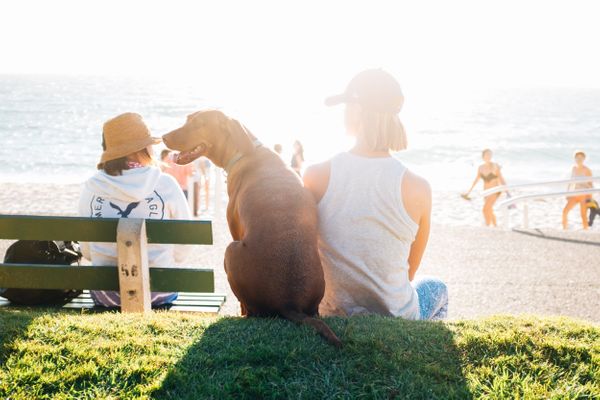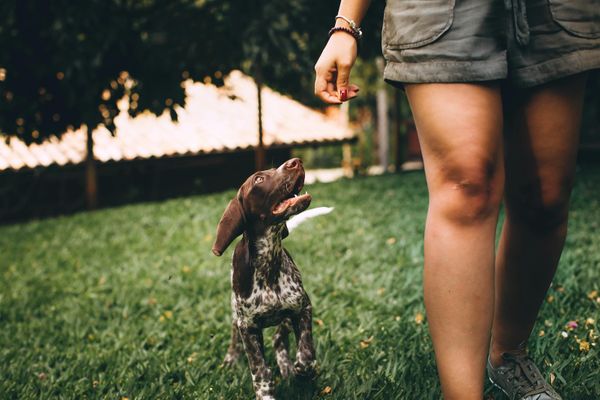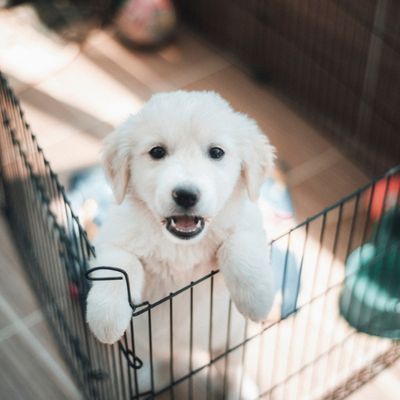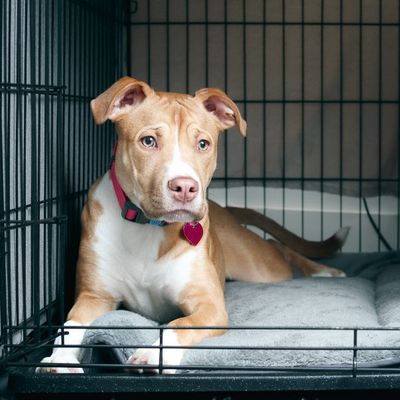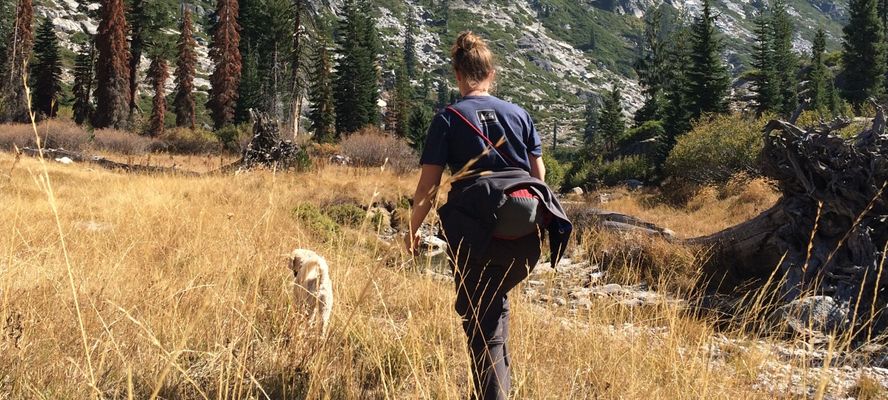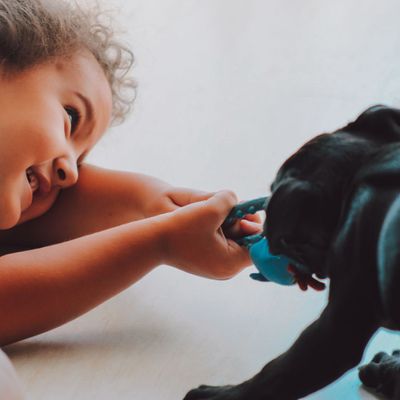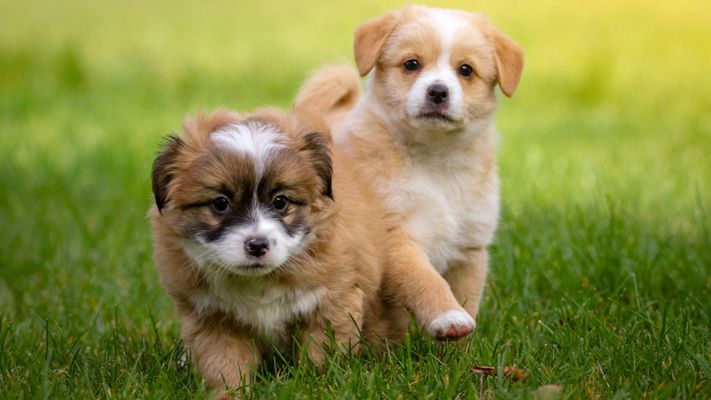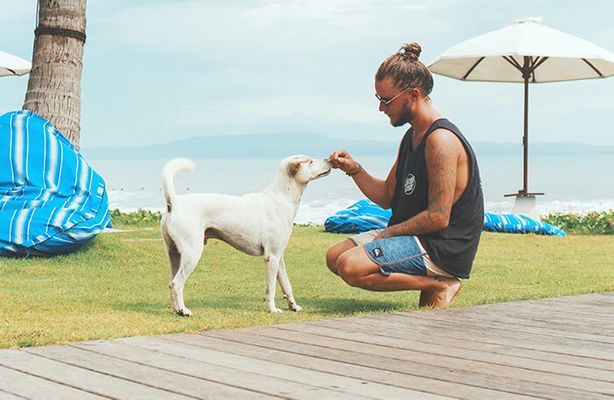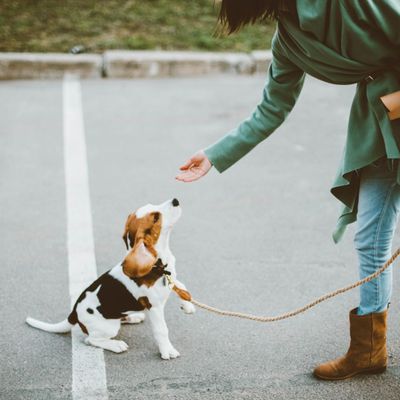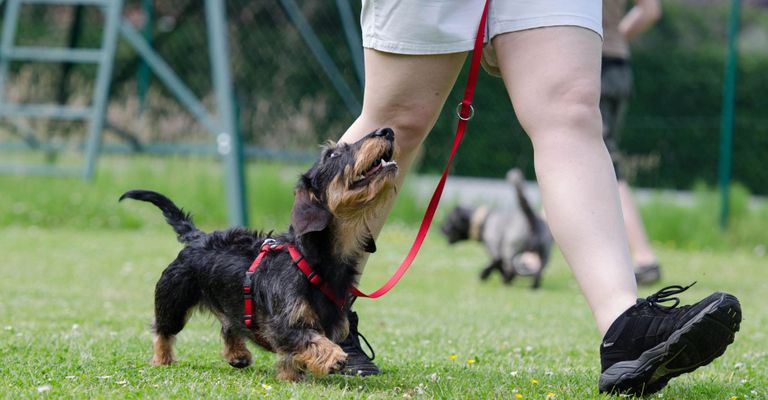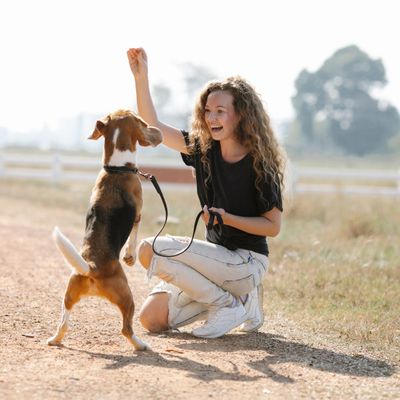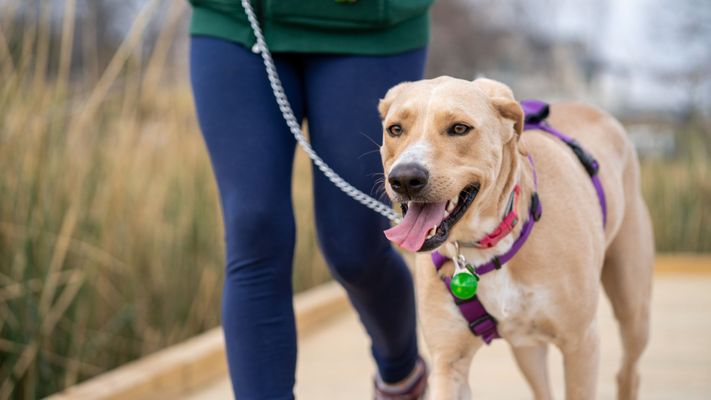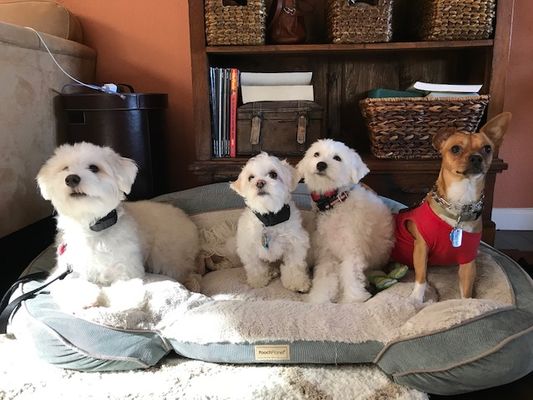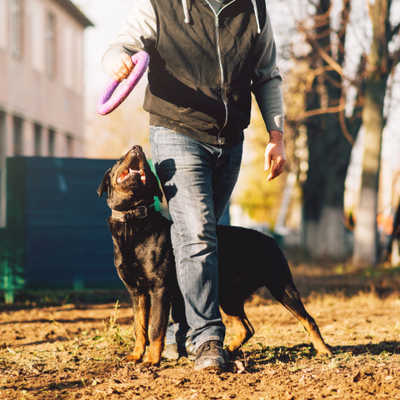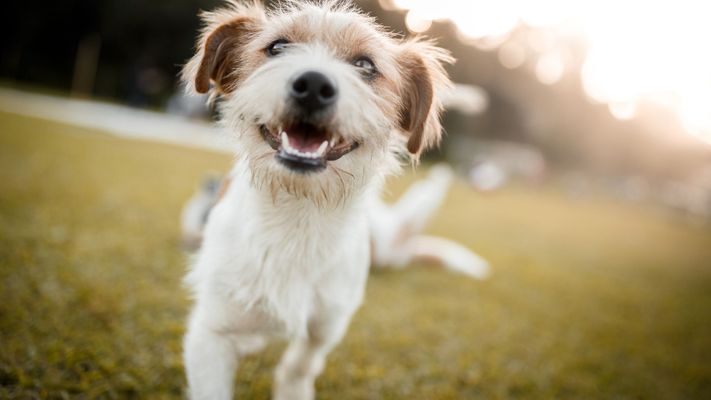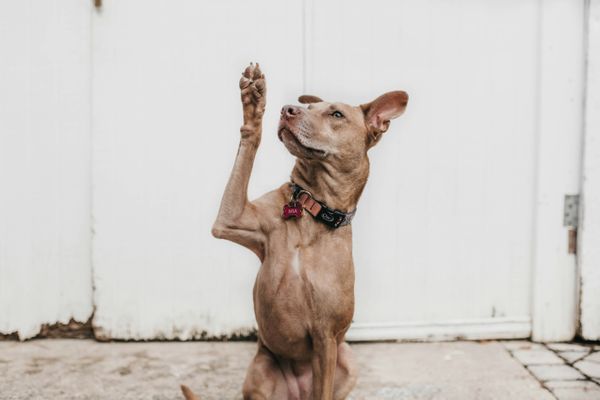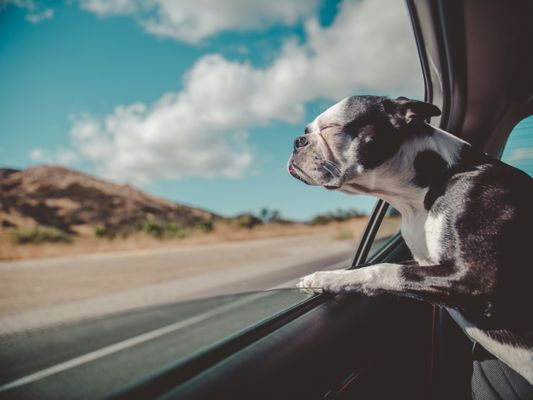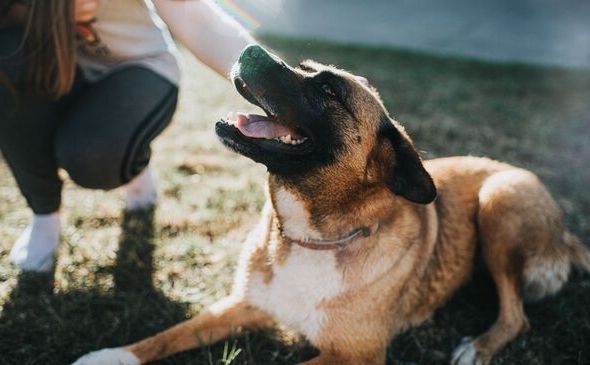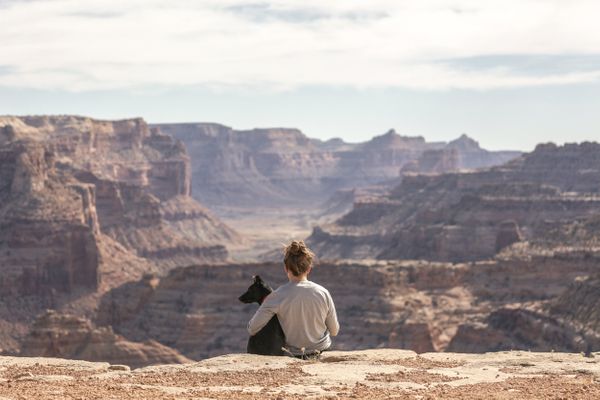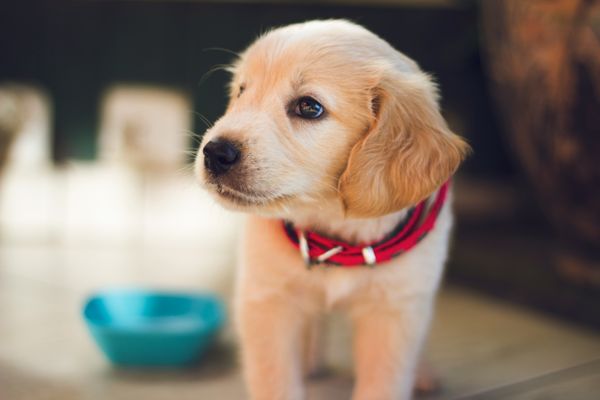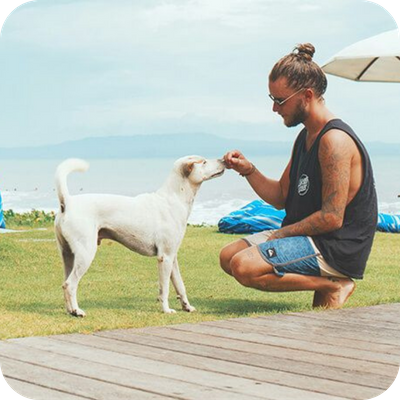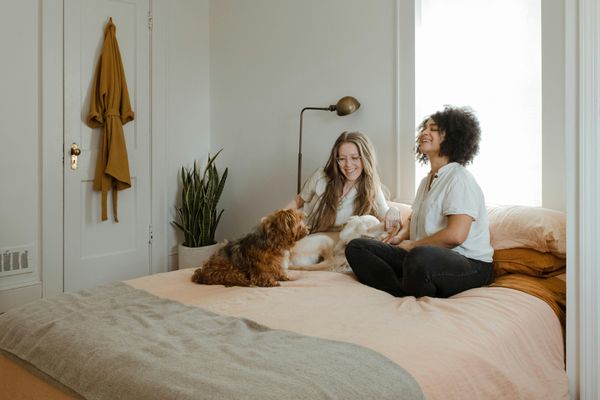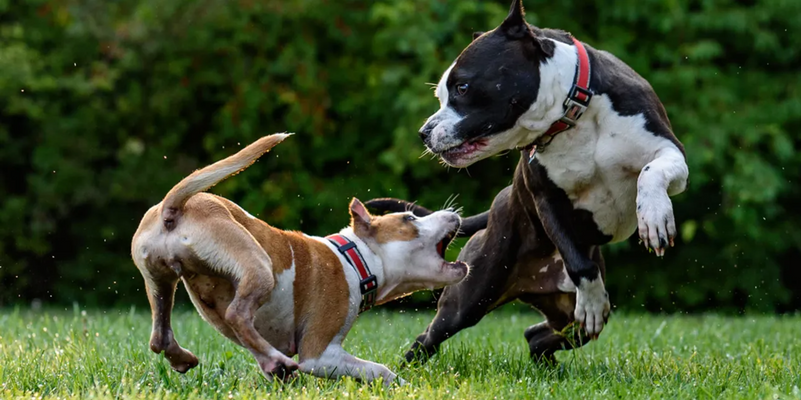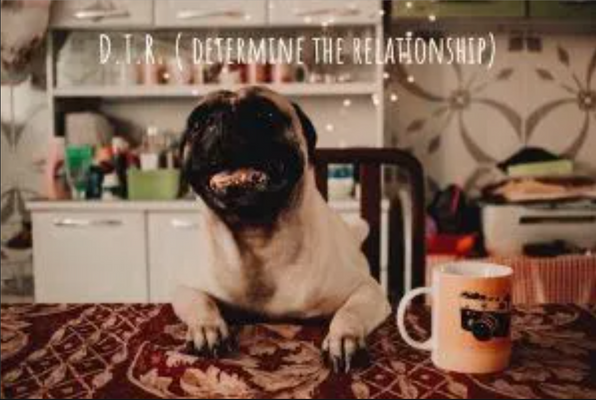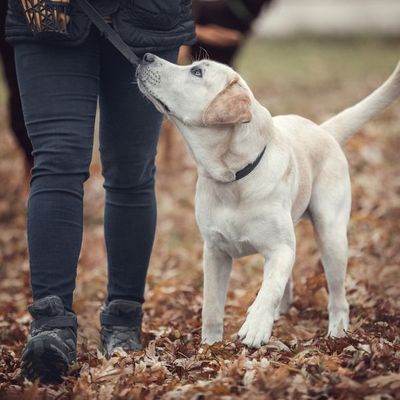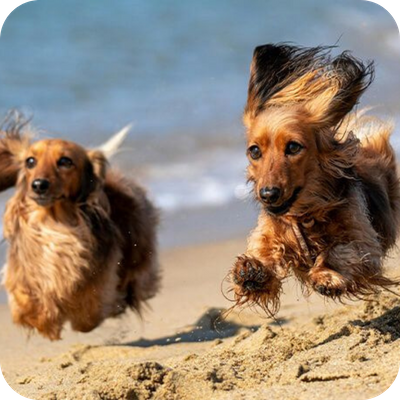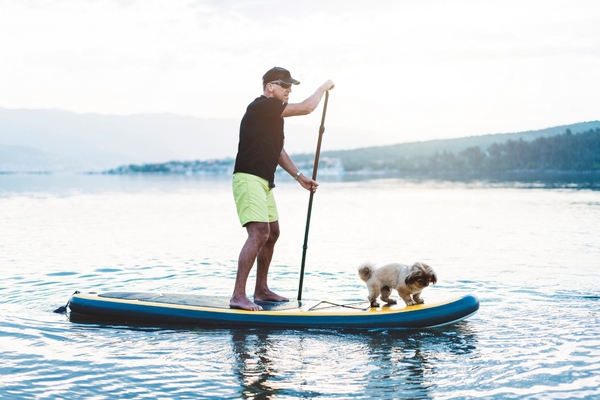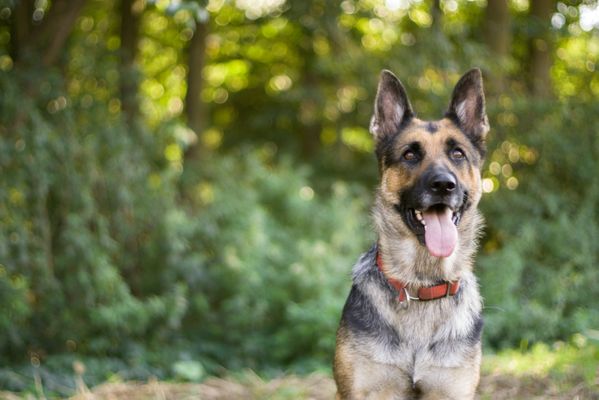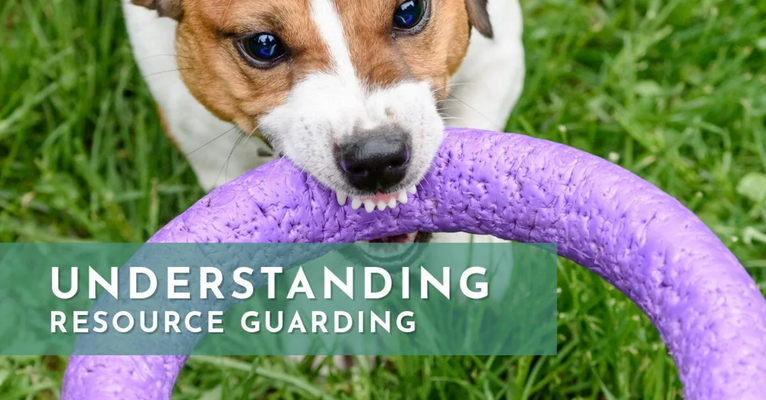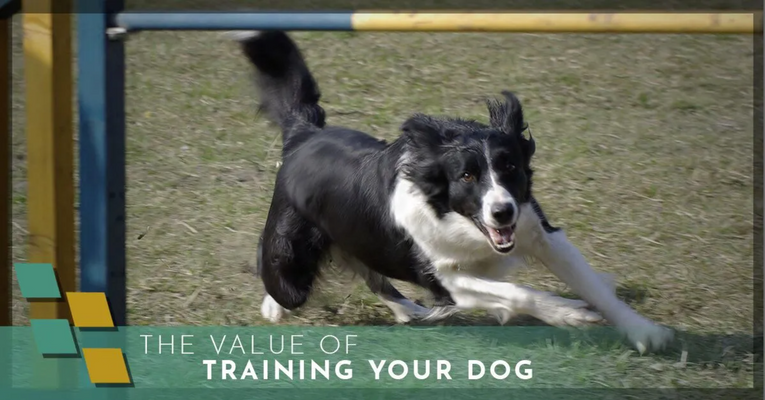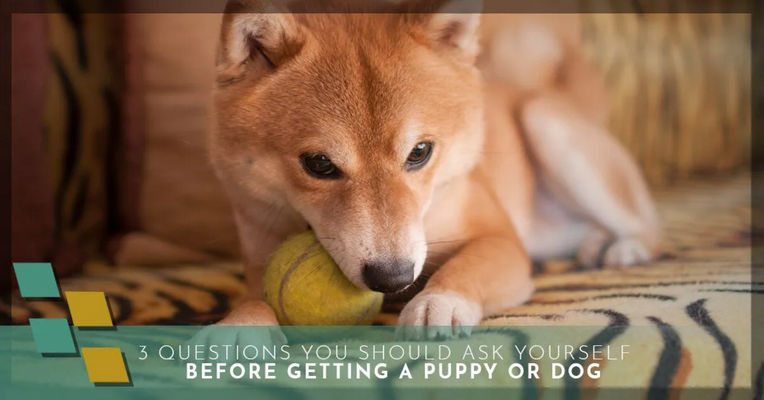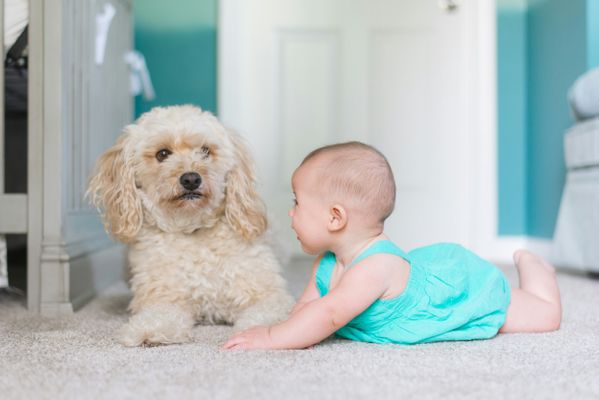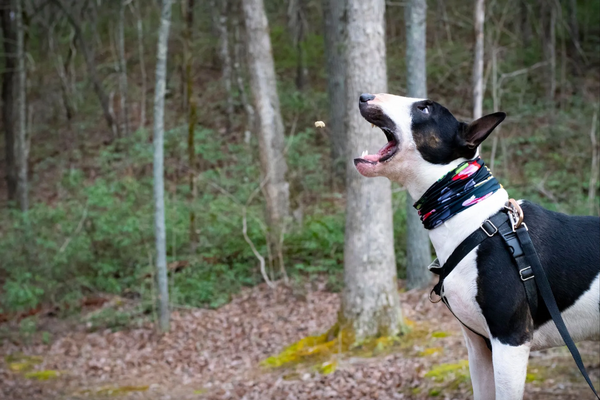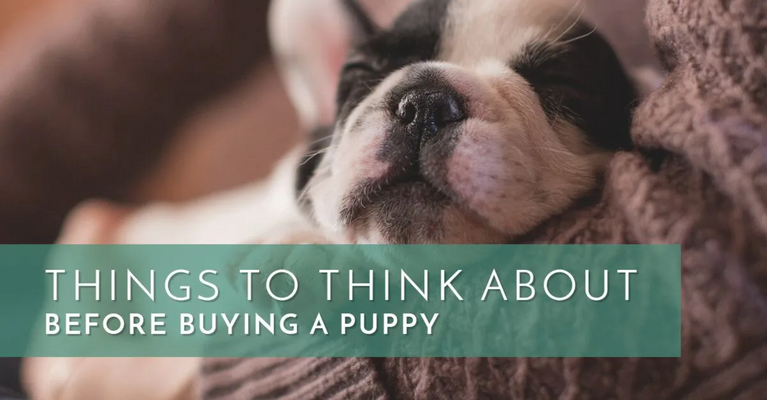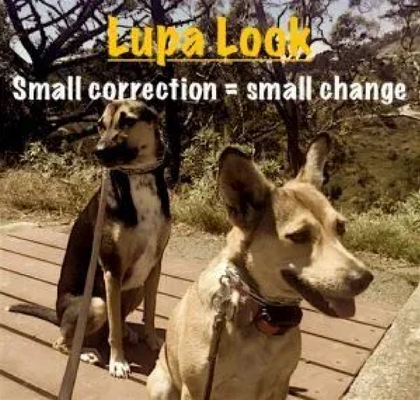Free Training Tips
How to Change Your Dog’s Behavior: 3 Key Steps Every San Diego Dog Owner Needs to Know
If your dog pulls on the leash, barks nonstop, or ignores your commands, you’re not alone. Many San Diego dog owners come to Lupa K9 Dog Training looking for help with obedience, reactivity, and everyday manners. The good news? Your dog’s behavior can change-quickly and effectively-when training is rooted in leadership, relationship, and communication.
At Lupa K9, we believe that real transformation starts with how you connect to your dog, not just the commands you give. Here are three essential things you can do to change your dog’s behavior starting today.
1. Lead With Calm, Consistent Structure
Dogs thrive when they know what to expect. Leadership isn’t about being harsh-it’s about providing calm, consistent structure so your dog feels safe and secure.
-
Establish daily routines (walks, meals, training time).
-
Follow through with clear rules-don’t allow jumping one day and correct it the next.
-
Stay calm and steady. Dogs mirror your energy; if you’re calm, your dog will settle faster.
2. Build a Strong Relationship Through Trust
Changing your dog’s behavior starts with how your dog sees you. If you want your pup to follow your lead, the relationship must be based on trust and respect.
moreHow to Care for Your Dog During Labor Day Festivities
Labor Day is the perfect chance to relax, celebrate, and enjoy time with family and friends. But while backyard BBQs, pool parties, and fireworks are fun for humans, they can be stressful-or even dangerous-for your dog. A little planning goes a long way to make sure your pup stays safe and happy during the holiday.
Keep Harmful Foods Out of Reach
Labor Day gatherings usually mean tables full of delicious food, but not everything is safe for dogs. Bones, onions, corn cobs, chocolate, and desserts can all cause serious health issues. Ask guests not to share scraps, and keep plates and trash covered. A designated treat or chew for your dog can help them feel included without the risks.
Create a Calm Space
Crowds and loud music can overwhelm even the most social pup. Provide a quiet room or shaded outdoor spot where your dog can rest comfortably with water, a bed, and their favorite toy. Having a safe retreat lowers stress and prevents overexcitement.
Prepare for Fireworks and Noise
Fireworks are a Labor Day tradition in many places, but they can be terrifying for dogs. Take your pup on a long walk earlier in the day, then keep them indoors during the evening. Play calming background music, use a white noise machine, or offer an enrichment toy to distract them. Staying home with your dog during fireworks, when possible, provides extra comfort.
moreThe 5 Most Important Things to Train Your Puppy in San Diego
Bringing home a new puppy is exciting, but it also comes with responsibility. The early weeks and months are critical for shaping your puppy’s behavior and setting them up for success. At Lupa K9 Dog Training in San Diego, we believe every puppy should start with these 5 essentials:
1. House Training
Teaching your puppy where to go potty is the first step to a peaceful home. Consistency and routine are key. Take your puppy out frequently, reward successes, and avoid punishment. With patience, you’ll establish reliable habits quickly.
2. Crate Training
A crate is not a punishment-it’s your puppy’s safe space. Proper crate training helps with independence, prevents accidents, and provides a secure place when you can’t supervise. Puppies actually feel calmer when they have their own den-like environment.
3. Leash Manners
San Diego is full of amazing walking trails and dog-friendly spots, but pulling on leash can make outings stressful and unenjoyable. Start training your puppy early to walk politely beside you and follow you. Good leash manners not only make walks enjoyable, they also keep your pup safe.
4. Socialization
Puppies are most impressionable between 8-16 weeks. Introduce them to people, other dogs, sights, sounds, and experiences around San Diego. Positive exposure prevents fear and reactivity later in life and builds a confident, well-adjusted companion.
morePuppy Training in San Diego: How to Help a Puppy That Barks at Everything
If you have a new puppy in San Diego, chances are you’ve heard a lot of barking. From people walking by the window, to other dogs on a walk, to random noises outside-many puppies seem to bark at everything. While barking is a natural part of how dogs communicate, excessive barking can quickly become frustrating for you and overwhelming for your pup. The good news? With early puppy training, you can teach your dog when it’s appropriate to bark and when it’s time to settle down.
Why Do Puppies Bark at Everything?
Puppies are curious by nature. The world is brand new to them, and barking is one of the ways they process it. Here are some common reasons your puppy might be barking:
-
Alert barking: Noticing sounds, people, or animals they aren’t used to.
-
Excitement barking: Overstimulated during play or walks.
-
Fear or insecurity: Trying to make scary things go away.
-
Attention seeking: Learning that barking gets your reaction.
Left unaddressed, these patterns can turn into long-term habits, making walks, visitors, and daily life stressful.
moreHow to Advocate for Your Nervous Dog When Guests Visit
Inviting friends or family over should be enjoyable but for many dogs, especially those who are shy, anxious, or reactive, it can be overwhelming. At Lupa K9 Dog Training in San Diego, we work with many families whose dogs struggle when people visit their homes. The good news? With the right preparation and advocacy, you can help your dog feel safe while teaching your guests how to respect your pup’s needs.
Why Advocacy Matters
When your dog feels nervous around guests, it’s not just “bad behavior.” Barking, pacing, hiding, or even growling are signs your dog is stressed. As their owner, you are their voice and advocate. By setting boundaries and creating safe conditions, you show your dog that you’ll protect them. This builds trust, reduces anxiety, and prevents escalation.
Create a Safe Space
One of the best ways to support a nervous dog is to provide a designated “safe zone.” This could be a crate, a quiet bedroom, or a gated-off area with their bed and toys. Teach your guests that this space is off-limits, giving your dog control over whether they want to interact. In many cases, just knowing they have the choice helps dogs feel calmer.
Communicate with Guests
moreSummer Hiking Safety Tips for Dogs in San Diego
San Diego is known for its beautiful trails from Cowles Mountain to Los Peñasquitos Canyon, and hiking with your dog is a wonderful way to enjoy the outdoors. But with our long, hot summers, it’s important to keep your pup safe on the trail. At Lupa K9 Dog Training in San Diego, we help dogs and their owners build the skills needed for stress-free adventures, including hiking during the warmer months.
Tips for Safe Summer Hikes with Your Dog:
-
Avoid the midday heat: Early mornings or evenings are best for hiking in San Diego when temperatures are cooler.
-
Protect sensitive paws: Hot asphalt, rocks, and sand can burn paw pads-stick to shaded dirt trails and check surfaces with your hand before walking.
-
Stay hydrated: Always pack extra water and a collapsible bowl. Offer frequent breaks to keep your dog from overheating.
-
Watch for heat stress: Signs of overheating include heavy panting, drooling, or staggering. Find shade and rest immediately if you notice these symptoms.
-
Use proper leash training: San Diego trails are home to wildlife, steep terrain, and other hikers. A well-trained dog on leash makes the experience safer and more enjoyable for everyone.
more
How to Prepare Your Kids for a New Dog or Puppy
Lupa K9 Dog Training
Bringing home a new puppy or dog is exciting but if you have young children, preparation is key to making the transition smooth, safe, and joyful for everyone involved. At Lupa K9, we specialize in family dog training in San Diego, and one of the most important steps we teach families is how to set clear expectations for kids and dogs alike.
Here’s how to prepare your children for your new furry family member.
1. Talk to Your Kids Before the Dog Arrives
Have age-appropriate conversations about what it means to have a dog. Let them know that dogs have feelings, need space, and communicate differently than people. Help your kids understand that a dog is not a toy, it’s a living being who may feel scared or unsure in a new environment.
Make a list together of “Do’s and Don’ts” like:
-
DO speak in a calm voice around the dog
-
DO give the dog space when they’re eating or sleeping
-
DON’T pull on ears, tail, or fur
-
DON’T hug the dog tightly
2. Teach Safe Approaches and Petting
Show your kids how to safely approach a dog:
-
Ask an adult first if it’s okay to pet the dog
more
Dogs and Baby Safety Training In San Diego
Bringing home a new baby is a beautiful and life changing moment. But if your dog has a history of reactivity or agression, the excitement can come with understandable concern. At Lupa K9, we specialize in behavior modification for dogs in San Diego and can help guide your family through this important transition with care and confidence.
Here’s how you can begin preparing your dog now to create a peaceful and safe home for your baby.
1. Start Training Early Before the Baby Arrives
DO NOT WAIT until your baby is born to begin training. Dogs with this kind of history need time, structure, and consistency to modify their behavior. Early preparation is essential.
Focus on skills like:
-
Sit, stay, leave it, and go to place
-
Desensitization to new sounds such as baby crying or babbling
-
Crate training or creating a calm space in your home
-
Structured leash walks that encourage calm focus
If your dog has shown signs of reactivity or aggression, professional support is highly recommended. Our in home dog training throughout San Diego can help address behavior safely and effectively.
moreSafe Off-Leash Dog Training in San Diego
Caroline
Off-leash freedom is one of the most rewarding experiences you can have with your dog-but it must be built on reliable communication and trust and more often than not, with a tool like the remote collar. In San Diego, where we’re surrounded by dog-friendly beaches, parks, and hiking trails, having a dog that responds off-leash isn’t just convenient-it’s critical for safety. That’s where remote collar training, also known as e-collar training, comes in.
But is it safe?
As a professional dog trainer in San Diego, I get this question all the time. The short answer is: yes, remote collar training is incredibly safe, humane, and effective-when done properly. Here’s what you need to know.
What Is Remote Collar Training?
Remote collars are not shock collars. Modern e-collars use adjustable levels of low-level stimulation, similar to a gentle tap or vibration with a tens unit physical therapists use. The goal is not to punish, but to clearly communicate with your dog-especially at a distance when verbal commands may not be enough.
Why San Diego Dog Owners Choose Remote Collar Training
In a place like San Diego, your dog will likely encounter:
moreBringing a puppy home!
Caroline
Whether you’re looking for a jogging buddy, a snuggle companion, or a future therapy dog, it all starts with choosing the right pup for your lifestyle. Here’s how to find the best match and get off on the right paw.
1. Understand Your Lifestyle and Goals
Before you even look at puppies, get honest about what kind of dog best suits your day-to-day life:
-
Active vs. Calm: Do you want a high-energy hiking companion or a relaxed couch snuggler?
-
Size Considerations: Will your home or apartment accommodate a large breed?
-
Family Friendly: Do you have kids or other pets?
-
Training Needs: Are you prepared for a stubborn or highly intelligent breed that may need more mental stimulation?
Choosing a breed or mix that aligns with your energy, space, and goals will set you both up for long-term success.
2. What to Look for in a Breeder
A responsible breeder is the foundation of a healthy, well-socialized puppy. Red flags and shortcuts can lead to years of preventable health or behavior issues.
Here’s what to look for:
moreWhy Your Dog is Guarding That Bone
Caroline
Resource guarding is more common than you think, and the good news is: it’s highly workable. Resource guarding is when a dog protects something they find valuable-like food, toys, space, or even a person. It might look like growling when you approach their bowl, snapping over a toy, or stiffening when someone gets too close. If you have noticed this behavior, you’re not alone!
As a balanced dog trainer in San Diego, I approach resource guarding by addressing both the emotional roots and the behavioral symptoms.
Why Does Resource Guarding Start?
-
Instinctual Behavior: In the wild, guarding resources helped dogs survive. It's not “bad,” just misplaced behavior when they are now part of our family and in a shared space.
-
Lack of Structure: Dogs without clear rules often feel like they have to manage the world themselves-including protecting their “stuff.”
-
Insecurity or Anxiety: Nervous dogs may guard out of fear of losing control of something they value.
-
Reinforced by Accident: If you back off when your dog growls, you’ve accidentally taught them that guarding works. Repeat this enough times (or taunt them because you think it's funny) this will turn in to a big problem fast!
more
Why Consistency Matters in Dog Training
caroline
One of the biggest things I emphasize as a San Diego dog trainer is consistency. It’s not flashy, but it’s the most important part of dog training-whether I'm working with a brand new puppy, teaching obedience skills, or modifying tough behaviors like reactivity or separation anxiety.
You might leave a training session feeling confident and then forget to practice, or only follow through when it’s convenient. I know life gets busy but here’s the truth: dogs learn through repetition and routine. When we’re inconsistent, dogs get confused-and confused dogs have a really hard time learning.
Let me give you a few real-life examples:
-
Puppy training: If your puppy is only asked to “sit” sometimes before meals or doors, they won’t understand that “sit” means “please.” But if you ask every time and follow through, your puppy will start offering that behavior automatically.
-
Leash manners: If you allow pulling on some walks and correct it on others, your dog won’t learn what’s expected. Consistently reinforcing loose leash walking-every time you pick up the leash-teaches your dog what works and what doesn’t.
more
It's not always your dogs fault
Caroline
As professional dog trainer in San Diego, I hear it all the time: “My dog is stubborn.” “She just won’t listen.” “He’s reactive and anxious-it must be his personality or breed.” But here’s the truth: most unwanted dog behaviors aren’t always your dog’s fault. They're also a reflection of unmet needs, unclear communication, or inconsistent leadership-and that’s something we can help you with!
Dog training is not just about teaching your pup to sit or stay. It's about reshaping the relationship between you and your dog. Whether your dog pulls on the leash, jumps on guests, struggles with separation anxiety, or shows reactivity to other dogs, behavior can improve with the right training, consistency, and owner involvement.
At Lupa K9, we specialize in private dog training in San Diego that empowers you-not just your dog. Our programs focus on educating you, the owner, and giving you the tools to communicate clearly, set boundaries, and guide your dog toward calm, balanced behavior.
There’s no such thing as a “bad dog”-just untrained behavior. And the good news? All behavior can be improved.
moreWhy You Shouldn’t Let Everyone Greet Your Dog
San Diego Dog Training Tips from Lupa K9
It might feel polite, or even social, to let people say hi to your puppy on walks. After all, your dog is cute, and people mean well. But here’s the truth: letting everyone interact with your dog, especially early on, can actually create long-term behavior issues.
At Lupa K9, we work with San Diego dog owners every day who are struggling with leash reactivity, overexcitement, or fear-based responses on walks. And often, the problem started with too much unstructured socialization in puppyhood.
Here’s why it matters:
1. You’re unintentionally teaching your dog to focus on everyone except you.
If every passerby becomes a possible playmate, your dog starts scanning the sidewalk for attention instead of walking calmly by your side.
2. It builds overexcitement, not social skills.
Being petted by strangers doesn’t teach calmness-it teaches arousal and jumping. True socialization is about exposure without overstimulation.
3. It can lead to reactivity later.
When dogs expect every person or dog to interact, and then someone doesn’t, frustration builds. That can turn into barking, whining, or pulling.
moreHow to Build a Better Relationship With Your Dog
Lupa K9- Balanced Dog Training in San Diego, CA
When people reach out to me for dog training in San Diego, one of the most common things they say is, “I just want my dog to listen” or " I want my dog to behave" or even "I want my dog to stop these problem behaviors."
Training isn’t just about fixing problem behaviors-it’s about creating clarity, trust, and calm between you and your dog. And to do that, we need structure.
The Power of the Structured Walk
A structured walk is one of the most underestimated training tools out there. It’s not just exercise-it’s leadership in motion. When your dog walks beside you instead of zig-zagging, sniffing every pole, or pulling ahead, it shifts the energy. You go from being background noise to someone your dog is actually tuned into.
In balanced training, the walk becomes an opportunity to reinforce calm, build impulse control, and deepen communication-without having to use endless treats or distraction techniques.
Why Dogs Crave Routine
Dogs are pattern-seeking animals. A predictable routine helps regulate their nervous system and reduces anxiety. Whether it’s consistent feeding times, walk times, or crate routines, having a rhythm helps your dog settle. And when your dog is mentally and emotionally more balanced, they’re in a better place to learn, listen, and connect.
moreWhy Multitasking on Dog Walks Can Set You Back
Caroline
We’ve all been there-scrolling emails, catching up on texts, or taking a work call while walking the dog. It feels efficient. But here’s the thing: multitasking during walks can actually undo the training progress you’ve worked so hard to build.
Dogs are incredibly tuned in to our attention. When we’re distracted, they notice. You may find your dog pulling more, reacting to other dogs, or checking in with you less. That’s because, from their perspective, you’re not really "on the walk" with them. You're physically present, but mentally elsewhere-and that inconsistency can erode leash manners, responsiveness, and trust over time.
In training, consistency is everything. If sometimes you correct a behavior and other times you miss it because you're deep in a podcast or mid-text, your dog learns that the rules are unpredictable. This can lead to confusion, frustration, and setbacks in behavior.
That doesn’t mean every walk has to be a formal training session. A balanced approach means knowing when it’s okay to relax and when your dog needs more of your focus. For example, if your dog is still learning leash manners or is reactive around triggers like dogs or people, those walks require your full presence. But if your dog is calm, in a familiar environment, and you’ve already given them some structure and engagement early in the walk, a short call might be just fine.
moreHow to Care for Your Dog in Springtime in San Diego
How to Care for Your Dog in Springtime in San Diego
Spring in San Diego is a beautiful time to get outside with your dog -but it also brings some unique challenges that pet owners should keep in mind. Here’s how to enjoy the season safely while keeping your pup healthy and happy.
1. Watch Out for Foxtails!
Foxtails are sharp, barbed seed heads from certain types of grasses that thrive in Southern California in the spring and early summer. These little guys can work their way into your dog’s nose, ears, paws, and even under the skin -leading to painful infections or emergency vet visits.
What to do:
- Avoid tall, dry grass on hikes or walks
- Check your dog’s paws, ears, and coat after every outing
- Consider trimming long hair between paw pads
2. Ease into More Outdoor Time
If your dog’s been less active during the cooler months, ease them into longer walks or hikes as the weather warms up. Just like us, they need time to build stamina!
Pro tip: Spring is a great time to brush up on leash skills or structured walking routines before the summer crowds hit the beaches and trails.
moreTransforming Leash Reactivity into Leash Obedience
As dog owners, we all love taking our furry companions for walks, but sometimes it can become a stressful experience due to leash reactivity. This behavior can be seen in dogs who become aggressive or anxious when they see other dogs, people, or even cars while on a leash. But fear not, with the right training and techniques, leash reactivity can be transformed into leash obedience. Lupa K9 specializes in helping dogs and their owners overcome leash reactivity and create a more enjoyable walking experience.
moreWhat Age is Best to Start Dog Training?
Training your dog is a crucial aspect of ensuring they grow into a well-behaved, happy, and socialized pet. One of the most common questions new dog owners ask is: What age is best to start dog training? The answer is pretty straightforward… the second you meet your dog, training begins. Everything you do your dog is observing, absorbing and learning, so the time is now! Here is an abbreviated rough idea as far as what and when to train dogs during different times in their development:
Puppyhood: The Foundation Stage (8-16 Weeks)
- When to Start: As early as 8 weeks old.
- Focus: Socialization, basic commands, house training.
Starting training during the early weeks of a puppy's life is crucial. Puppies are like sponges at this age, absorbing everything around them. The period between 8 to 16 weeks is often referred to as the critical socialization period.
- Socialization: Expose your puppy to a variety of people, environments, sounds, textures, etc. to build their confidence and reduce fearfulness.
- Basic Commands: This is the time to establish leadership and basic manners as well as how to listen to you, follow you, set boundaries, etc. You can also begin to teach simple commands like sit, stay, come, and learn their name.
- House Training: Begin potty training and establish a routine to prevent accidents in the house.
What is the number one rule of dog training?
CONSISTENCY! I would say this applies to pretty much everything in life when you are looking for sustainable results and change. In dog training, consistency involves maintaining the same commands, expectations, and responses every time you interact with your dog. This helps your dog understand what is expected of them and reinforces positive and negative consequences to their behavior. Consistent training creates a clear and predictable environment for the dog, which is crucial for effective learning and behavioral conditioning. If you are ever wondering why your dog isn’t catching on or your dogs behavior feels unpredictable, it likely has to do with how consistent you are with your communication, boundaries, training, follow through etc. The only way to set you and your dog up for success is consistency in how you train and communicate with your dog.
moreTop Tips for Choosing the Right Dog Trainer for Your Furry Friend
When it comes to ensuring a happy and healthy relationship with your furry friend, choosing the right dog trainer is crucial. With a myriad of options available, finding the perfect fit for your dog's training needs can be overwhelming. At Lupa K9 Dog Training, we understand the significance of in-home dog training and the impact it can have on strengthening the bond between you and your canine companion.
moreWhy You Should Press "Paws" on Doggy Meet and Greets During Walks
This might sound counterintuitive at first, but there is good reason why it's a good idea to hold off on letting your pup greet other dogs and people during walks at a young age. Grab a puppuccino and let's dive into this unconventional piece of advice.
We all know that socialization is crucial for our dogs, but there's a time and a place for everything. And on-leash greetings during walks? Not the ideal situation. Here’s why:
1. Focus.
When your dog is young, walks are the perfect opportunity to teach them leash manners, focus, and impulse control. If you let them meet every dog and human they come across during their walks, they'll start expecting it, and their excitement levels will go through the roof. The result? A dog that's more interested in the next potential playmate than in learning how to walk nicely on a leash.
2. Boundaries.
By allowing on-leash greetings, you're inadvertently teaching your pup that there are no boundaries when it comes to interacting with other dogs and people. This can lead to a dog that's overly friendly (and we're talking "jumping-on-strangers" friendly) or one that develops leash reactivity. Not the kind of energy we want our dogs to develop when he sees a person or dog or something he wants to investigate.
moreDon't Be A Tourist Be A Traveler
I heard a quote that said “ to be a tourist is to see, to be a traveler is to experience.” I feel like this applies in EVERY corner of our lives, not just to traveling. This picture is from my trip to Death Valley this past weekend . It was truly a magical place sprinkled with pastel colored mountains from mineral deposits. I felt like I was walking through mountains of painted Easter eggs! This picture doesn’t do it justice whatsoever . The further you walked through this canyon the more colors were revealed and the more you felt like a true visitor on this earth given a chance to see something only Mother Nature can pull out of her magic hat. You can go through life and see a lot of things but if you let yourself experience what you see and how you see, your life will be much richer and you will remember moments more vividly and attach feelings and meaning to them. Be present . How does this apply to dog training? If you are rushing through training your dog only to see the final results of your efforts you’re missing the point. Joy isn’t found in finishing an activity it’s found in doing it. Take your time with your dog. Enjoy experiencing your dog’s responses to the things you do and how he is learning. The nuances of training can feel mundane and repetitive but they aren’t like that for your dog. Your dog is engaged with you and is working hard to connect with you and learn what you’re teaching. Don’t rush just to see the final result. Take your time to experience all of it and your relationship will be richer because of it. This picture probably has no meaning to you and it probably doesn’t evoke any feelings for you… but it does for me :)
moreYou can't outsource your relationship troubles
When it comes to training your dog you can’t outsource everything. It's tempting to just hand over the leash to a professional but its not always that straight forward and you may not see the results you want if you aren’t changing how you live and engage with your dog once he is home.
When it comes to effective sustainable dog training, the most important factor is the relationship YOU have with your dog. When you work with your dog, you're not just teaching them commands - you're building a relationship of trust and respect and creating a common language you build together. You're showing them that you're a reliable consistent leader who they can depend on. This is a huge piece that is often missed when owners reach out for help. If you disguise relationship work with teaching commands you’re missing the point and you and your dog will be left more confused.
Now, don't get me wrong - there's nothing wrong with getting some help from a professional trainer or doing a board and train. In fact, it can be incredibly valuable to send your dog to a trainer who can create a solid foundation and help teach you the skills to maintain it. But the key is to remember that you're the one who ultimately has the most influence over your dog's behavior. You're the one who spends the most time with them day in and day out, who knows their personality and quirks inside and out. And that's what makes your relationship with them so special and powerful. You can only outsource some of the work but not the nitty gritty day to day stuff once training is “over”. The skills you learn from your trainer should be a daily practice.
moreThe Dynamic Duo: Consistency and Unity in Dog Training
Hey dog lovers! If you're a proud dog parent, you know that training your furry friend is no walk in the park (pun intended). It takes time, patience, and, most importantly, consistency. But wait, there's more to the recipe for success - it's also crucial for all the humans involved in your dog's life to be on the same page. So, let's dive into why consistency and unity are the ultimate keys to unlocking your dog's training potential.
First off, why is consistency so important? Well, imagine trying to learn a new skill or language, but the rules keep changing every other day. Sounds frustrating, right? That's exactly how your dog feels when there's no consistency in their training. Our canine companions thrive on routine and predictability. When they know what to expect, they're more likely to understand and remember the commands you're teaching them.
Consistency in dog training means sticking to the same cues, rewards, and consequences every time. For example, if you're teaching your dog to sit, always use the same command word, hand signal, and reward. Mixing it up will only lead to confusion and slow down your dog's progress.
Now that we've covered consistency, let's talk about the second ingredient: unity. If you live with family members or have roommates, it's crucial that everyone involved in your dog's life is on the same page when it comes to training. You might be thinking, "Why does it matter if my partner or roommate is using a different command or method?" The answer is simple: it matters a lot!
more5 reasons why you should crate train your dog
POV: Your dog peed on you…in your bed…while you were sleeping (true client story).
Now, let’s talk about the magical world of crate training!! (cue glitter bomb). You too can get a good (dry) night sleep and peace of mind when you leave the house with the use of a crate. Here’s how…
Why I recommend crates:
- Crates create a safe place for your dog ( and you for that matter) to unwind and it creates a calmer state of mind by having a structured place for your dog to decompress and settle in to a calmer state of mind.
- Helps prevent anxious, bored, puppy behaviors like chewing on all of your beautiful things and/or potty accidents in unwanted place…like your face.
- Helps prevent unwanted behaviors when you are away, or at home, such as barking at the mailman through the mail slot, staring out the window and barking at Peggy and Pickles walking down the street, etc. Crates give your dog a calm place to relax and rest instead of engaging in self rewarding behaviors like protecting the house.
- Helps with potty training! Dogs don’t like to poop and pee where they sleep. With proper crate conditioning this can be a HUGE help with potty training. You don’t need to find a little present on your floor everyday if you don’t want to ;)
morePRACTICE CREATES PATTERNS
I’m sure you’ve heard that if you practice anything for 14 days it becomes a habit. I can’t speak to 14 as the magic number BUT if you practice something long enough, it will eventually become a habit if you put in the work and take the time to make it happen.
moreTHE NEW NORM: MAKING THE MOST OF THE COVID-19 LOCKDOWN
As the days pass and we continue to adjust to a “new normal”, it seems that we may be here for a while. Many have had the privilege to work from home, others may have lost their jobs, and others may be learning how to teach their children through their schoolwork. Everyone is adjusting and it can be challenging. However, despite how difficult it may be for some, there are ways to manage this shift in a healthy way by staying present and grounded- whatever that looks like for you. It could be calling loved ones everyday to check in, cooking healthy meals when you never used to cook for yourself, spending more quality time with your significant other or roommate since you don’t have to commute everyday, picking up a new hobby, and/or being able to take your dog for a longer walk.
As a dog trainer (and previous mental health professional), staying active mentally and physically is crucial for your overall mental health and your dogs mental health, especially in times like these. We have to find comfort in the total discomfort of the unknown right now, stay grounded, and be together even through physical isolation. Social distancing doesn’t mean isolating yourself socially and disconnecting. Connection with yourself and/or others, feeds your mental health so please stay visible (from 6 ft away ;)) we will get through this together!
moreSIGNS OF AGGRESSION TO LOOK OUT FOR IN YOUR DOG
As a dog owner, you probably know all too well how excitable and energetic dogs can be. They’re naturally a little “rough around the edges,” and that’s one thing we love about them! Unfortunately, that also means that it can be difficult to distinguish between aggressive and playful behavior. Whether your dog is playing with another canine companion, or zealously reacting to a new houseguest, the line between fun and aggression is often pretty blurred. If misread, it can lead to tragic accidents.
Aggressive behavior training is one of the services I focus on most at Lupa K9. It’s important to be able to recognize dangerous behaviors, and productively train your dog to move away from them in healthy ways. Not sure how to identify aggression? Here are some telltale signs — be sure to call Lupa K9 today if you see any of them in your dog!
moreD.T.R. (DETERMINE THE RELATIONSHIP)
The single hardest piece of dog training is not the mechanics of obedience, it’s developing the relationship and finding the courage to put our own emotional thoughts and needs aside to do what is best for our dogs. I totally understand why owners get stuck into thinking their dog thrives best with the kind of love that offers freedom, a pampered lifestyle, and tons of physical affection; I’ve fallen victim to that mentality too because it feels good to dish out that kind of love. However, the not-so-fun stuff like structure, leadership, trust, clear communication, and accountability which, yes, sometimes involves giving consequences for undesirable behaviors, is also love — maybe the most important kind of love. Without balance we are not serving the whole dog.
moreTRAINING YOUR DOG WITH LEADERSHIP
Off-leash, calm, and in an open field?! Finn used to be a runner. How did we get here? Leadership. People always ask, “Well, what does that really mean? What does that look like?” It means being a calm, steadfast, consistent, confident and clear supporter for your dog in every area of his life. It means teaching him how to physically and mentally be still in any environment and to look to you for guidance. It means providing the kind of love that teaches your dog how to be comfortable and unconcerned about the world by clearly communicating what behaviors and responses are acceptable and what behaviors and responses are not. It means loving him by rewarding when he’s doing well and correcting him when he makes a mistake. Being fair, being relevant, being someone he respects and wants to listen to because you know his boundaries and limitations and will advocate to keep him safe but challenge him to trust you in situations that stretch his comfort zone.
This is why just focusing on sit, down, stay and come are not enough. Finn can do all of those things but he wouldn’t be able to settle his mind if I didn’t put in the work to form a solid relationship and work on his state of mind- he needs to trust me enough to defer to me before he acts, not because he is forced to, but because it is in his best interest to do so.
moreAVOID THESE COMMON DOG TRAINING MISTAKES
There is a reason why professional dog training services such as Lupa K9 exist — dog training can be an art, and if you don’t know what you’re doing, there are actually a lot of mistakes that can be made. While I make my living training dogs in the San Diego area, one of the secondary goals of my training sessions is to help owners learn how to train dogs themselves, so that the dog can have a lifetime of good training and responsible stewardship.
There are a lot of dog training mistakes that are easy to make if you’re not experienced. Here are some of them — make sure you avoid these behaviors, whether you’re handling a young puppy or a mature adult dog!
moreFUNCTIONAL OBEDIENCE – BEING YOUR DOG’S LEADER
One mistake that a lot of dog owners make is focusing on specific tasks and actions when they’re training their dog. Yes, you can train your dog to do extremely specific tasks, but ultimately, it’s easiest to train a dog when they feel naturally submissive towards you, and when they respect you as their de-facto leader.
It’s like the old adage: “Give a man a fish, he eats for a day. Give a man a fishing rod, he eats for the rest of his life.” In other words, by establishing a fundamental hierarchy between you and your dog which he naturally respects, it becomes inherently easier to train your dog, and they will better understand the context of why they’re being trained, causing behaviors to stick better. This is often referred to as “functional obedience.”
Here are some tips on how to be your dog’s pack leader:
Be Calm, Confident, and Steady: Dogs have a near-supernatural ability to detect anxious energy. If you’re feeling nervous, anxious, or flustered, you can bet that your dog probably knows. And if you haven’t established yourself as their leader, it may cause them to see you as weak. That’s not to say they won’t love you! But you may be opening up a window for them to believe that they’re the alpha dog of the house. Always be calm, assertive, and steady with your dogs. Even if they don’t like it sometimes, they will respect it.
more
WHAT WE CAN LEARN FROM HUMAN BEHAVIOR IN DOG TRAINING
Despite the great love we have for our dogs and puppies, it’s no secret that many dog owners are absolutely mystified by the prospect of dog training. They often don’t know how their dog thinks, or how they react to your disciplinary measures.
At Lupa K9, I take a holistic approach to training dogs which carefully balances rewards and corrections. One thing that helps people to understand the right balance is considering the behavior of children, or humans in general. Let’s look at how dog behavior mimics human behavior!
moreUNDERSTANDING RESOURCE GUARDING
We all like to have our things. The love for material possessions is one of humanity’s defining traits, so is it too crazy to assume that dogs feel the same way?
Indeed, there are many dogs who become protective and territorial in regards to material things that they form attachments to. This is known as “ resource guarding ,” and while it’s sometimes harmless, it can have negative consequences in certain situations. In this blog post, we’ll discuss resource guarding, the problems that it causes, and some starting points on how to prevent it!
moreTHE VALUE OF TRAINING YOUR DOG
Dogs are impulsive and opportunistic creatures. When they have an impulse, they act on it. So what do we do when we need to call our dog back to our side if they run away, when we need to get their attention if they pull on the leash to pick a fight with another dog, or pick up something dangerous off the ground? How do we get our dog to pay attention to us and ask for permission before acting? Leadership, communication and training.
more3 QUESTIONS YOU SHOULD ASK YOURSELF BEFORE GETTING A PUPPY OR DOG
The temptation to buy a new puppy or dog is an irresistible siren song that often leads to an impulse buy and could lead to buyers remorse IF you aren’t prepared. Although super cute and fulfilling, dogs (puppies in particular) require an enormous amount of care and attention. If you see a puppy in the window go through this checklist before you stare too deeply into their eyes:
moreDOGS AND BABIES!
Is it me or is everyone pregnant and having babies right now?! Congrats to all the new and expecting parents out there! If you’re about to bring a new baby home and you have a dog, I’m sure you’ve thought, “Oh man, how is this going to go? How do I introduce my dog to the baby and my baby to the dog?” There are so many videos of kiddos climbing all over their dog’s face, pulling their tails, and so on, and while some dogs have the temperament to tolerate it, I wouldn’t recommend it. Below is a link to a great article on how to prepare your dog for the new little person that is about to come home! If your dog has severe behavior issues and you aren’t sure how to navigate the new family dynamic with a little one, PLEASE reach out to me or another dog trainer in the area to ensure everyone is safe and feeling comfortable, and that you have a dog training plan in place! I’m here to help.
http://www.akc.org/content/dog-training/articles/how-to-introduce-babies-and-dogs/
moreUNSAVORY AND SWEET
What could possibly be unsavory about dog training?! It’s fun to spend time with our dogs, teach them new commands and reward them for doing well but what happens when they misbehave, bite someone, pull on the leash, or eat food off the table? With all the dog training methods out there, the one that gets the most mention is positive reinforcement… BUT (yes, but) methods based solely on rewarding good behavior, don’t address how to stop bad behavior and really, positive–only methods just make the owner feel good at the dog’s expense because we don’t have to say “no”. Ouch! Sorry to be so brutal, it’s a hard pill to swallow I know, but your dog cannot get by on praise alone, on food alone, or on saying “yes” alone. The unsavory side of training is correcting the behaviors you don’t want, which no one wants to do, but the sweet side is getting the dog of your dreams because you created a balanced relationship based on clear expectations and communication through structure, clear communication, and obedience. It’s all about setting realistic expectations and enforcing them. I’m in no way preaching training methods solely based on corrective measures either; rather, I’m saying it’s important to have both reward and punishment to get the sweet satisfaction of a well-trained dog you can take anywhere and do anything with. Bad behavior? Correct it in a way that clearly communicates to your dog that that behavior was unacceptable and then show them what to do instead and praise that behavior. Teach and encourage your dog to engage in acceptable behaviors that set a new standard, but if they misbehave, do something about it! We all learn by making mistakes and getting corrected for them and we continue doing good work when we get rewarded. If you show your dog the same balance and stay consistent with your expectations you can enjoy the fruits of your labor with a well-mannered and respectful dog! Contact me for info on how to better communicate to your dog the behaviors you want to see more of and the behaviors you want to avoid.
moreSMALL CORRECTION = SMALL CHANGE….IF ANY
If speeding tickets only cost one dollar, would you still speed? Probably. What about $50? Maybe. $100? $5,000? The impact of any consequence is subjective. I would never speed if there was a risk of paying $5,000 for a ticket, whereas I might not care as much about $50; but others might not even want to fork over a dollar. My point is that our dogs are the ones that determine what level of correction is meaningful enough to change their behavior. The same goes for rewards. They determine which reward is worth a change in behavior—this is not something we can determine for them. No one likes giving consequences, or receiving them, but that is how we learn and it’s how our dogs learn during dog training. Consequences are a necessary part of the learning process just as rewards are, but keep in mind, a consequence we may view as harsh, and a reward we may view as highly valuable, might not be significant in our dog’s eyes. Let your dog determine what motivates him to do or not do something and enforce the rules you set accordingly. Reach out for help or clarification if you need it! I’m here to help :)
more

